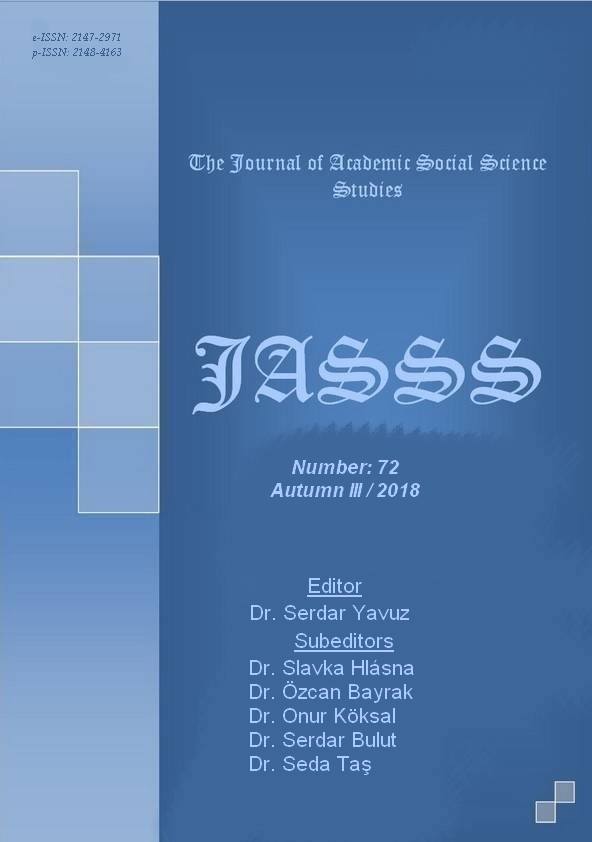Author :
Abstract
B.J. Collins, din için “Hatti yaşamının her yönüne hayat veren bir unsurdur” der. “Tanrılar”, “dinsel pratikler (ritüel-ayinler)” ve mitolojik unsurlar incelendiğinde dinin, salt doğaüstü varlıklar ve güçlere ilişkin zihinsel bir tutum olmadığı; Hitit siyasal sistemi, toplumsal yapısı ve yayılma politikası ile doğrudan ilişkili olduğu görülür. Şöyle ki Hitit Devleti, Orta Anadolu sınırları dışına taşarken, kraliyet arşivlerinde adı geçen tanrıların arasına Suriye ve Mezopotamya’daki kent merkezlerinde tapınılan tanrılar ile Hint-Avrupa ve Hatti orijinli tanrılar da giriş yapmıştır. Başlangıçta Nerik ve Hattuša gibi kült merkezlerinde ağırlıklı olarak Hatti kökenli tanrılara tapınıldığı anlaşılırken, daha sonraki dönemde bu gruba güney ve doğudan gelen grupların beraberlerinde getirdikleri gittikçe artan sayıdaki yeni bir takım tanrıların da katıldığı dikkati çekmektedir (Beckman, 1989:99). Kendi panteonlarına ait olmayan bu kadar tanrıyı benimsemek bir hoşgörü kültürünün varlığını gösterir. Yalnız hoşgörü kavramının kendisinin başlı başına bir paradoks içerdiği, bu paradoksun “hoş gören” ile “hoş görülen” arasındaki eşitsiz ilişkiye dayandığı, eşitsizliğin temelinde ise “hoş görenin” “hoş görülene” karşı “üstünlüğü” fikrinin olduğu düşünüldüğünde “Hatti Ülkesi’nin Bin Tanrısı” ifadesinin arka planında, duygusal ya da uhrevi bir amacın ötesinde daha dünyevi bir niyetin yattığı söylenebilir. Ekonominin siyaset ve dini belirlediği Eskiçağ dünyasının önemli figürlerinden Hititlerde, panteonundaki değişim ve genişlemenin, Krallığın siyasal tarihi ile birebir örtüşmesi bu çalışmanın temel konusunu oluşturmaktadır.
Keywords
Abstract
B.J. Collins is right about the religion when he says “it is an element refreshing every direction of Hatti life”. As “the deities”, “religious practices (rituals)” and mythological elements are examined, it is conceived that religion isn’t only a mental attitude about supernatural beings and powers, but also a system relating with Hittite socio-political structure and its imperialist politics. As the Hittite state expanded from its core in central Anatolia, the range of gods mentioned in the royal archives came to include deties that were worshiped in the urban centers of Syria and Mesopotamia as well as those Indo-European and Hattic origin. In the earliest period, the Hattic deties of cult centers such as Nerik and Hattuša predominated, later to be joined by increasing, numbers of newcomers at home in region to the south and east. Embracing these gods with no self pantheon indicates the existence of a tolerance culture. However, given that the tolerance is a paradoxicconcept in itself, thatthisparadox is based on the inequality between the “tolerating” and the “tolerated”, and that the idea of “dominance” by the “tolerating” overthe “tolerated” lies at theroot of this inequality, it can be said that there is not an emotional norethereal purposelying behind the expression “ThousandGods of theHattian Land”, but rather it is an earthlyone. In Hittites, as one of theprominent figures of Antic world, where the politics and religion are directed with economy, the change and expansion of its pantheon to coincide with the history of the Kingdom as whole and complete comprises the main subject of this study.





